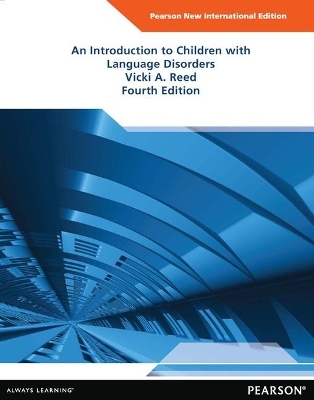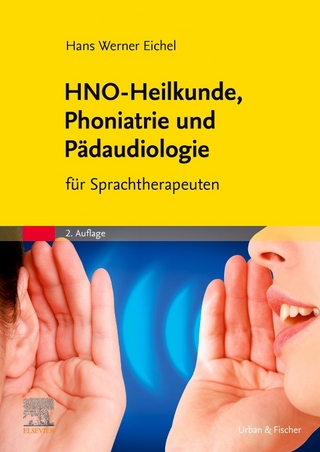
Introduction to Children with Language Disorders, An
Pearson Education Limited (Verlag)
978-1-292-04182-7 (ISBN)
TABLE OF CONTENTS
PART ONE: ASPECTS OF NORMAL LANGUAGE AND COMMUNICATION
Chapter 1: LANGUAGE AND HUMAN COMMUNICATION: AN OVERVIEW
COMMUNICATION
Language
Speech
Extralinguistic Aspects of Communication
A Bit More about the Relationships among Speech, Language, and Communication
COMPONENTS OF LANGUAGE
Phonology
Semantics
Syntax
Morphology
Pragmatics
COMPREHENSION AND PRODUCTION
COMMUNICATION MODES
Auditory-Oral System: Hearing and Speech
Visual-Graphic System: Reading and Writing
Visual-Gestural Systems
BIOLOGICAL, COGNITIVE AND SOCIAL BASES OF HUMAN COMMUNICATION
Biological Bases of Communication
Cognitive Bases for Language
Social Bases of Human Communication
SUMMARY
Chapter 2: NORMAL LANGUAGE DEVELOPMENT: A REVIEW
THE PRELINGUISTIC PERIOD: THE FIRST 12 MONTHS
Prelinguistic Communication Development
Prelinguistic Vocal Development
THE FIRST WORD PERIOD
Phonology
Semantics
Pragmatics
THE PERIOD OF TWO-WORD UTTERANCES
Semantic—Syntactic Development
Types of Two-word Utterances
THE PRESCHOOL YEARS AND BEYOND
Phonology
Semantics
Morphology
Syntax
Pragmatics
LANGUAGE, LITERACY, AND EDUCATION
Emergent Literacy and Preliteracy
School
SUMMARY
PART TWO: CHILDREN WITH LANGUAGE DISORDERS
Chapter 3: TODDLERS AND PRESCHOOLERS WITH SPECIFIC LANGUAGE IMPAIRMENT
IDENTIFICATION OF CHILDREN WITH LANGUAGE IMPAIRMENT
Mental Age, Chronological Age, and Language Age
Normal Variation, Normal Distribution, and a Statistical Approach
Social Standard
Clinical Markers
Challenging and Changing the Child’s Language Performance
Risk Factors for Language Problems
AN OVERVIEW OF SPECIFIC LANGUAGE IMPAIRMENT
Delay versus Disorder
Subgroups of Young Children with Specific Language Impairments
A Label for It and Reasons for It
Prevalence
Predicting Spontaneous Recovery from Early Language Delay
LANGUAGE CHARACTERISTICS OF CHILDREN WITH SPECIFIC LANGUAGE IMPAIRMENT
Some Language Precursors
Phonology
Semantics
Syntax and Morphology
Pragmatics and Discourse
Socialization and Psychosocial Factors
Narratives
IMPLICATIONS FOR INTERVENTION
Assessment
Intervention
SUMMARY
Chapter 4: LANGUAGE AND CHILDREN WITH LEARNING DISABILITIES
Mona R. Griffer Vijayachandra Ramachandra
AN OVERVIEW OF CHILDREN WITH LEARNING DISABILITIES
Labels and Terminology
Prevalence
Risk Factors
The Natural History of Learning Disabilities
LINGUISTIC ISSUES RELEVANT TO LEARNING DISABILITY
Metalinguistic Skills
Differences Between Spoken and Written Language
Differences in Developmental Expectations for Language Knowledge and Use
COMMUNICATION PROBLEMS IN CHILDREN WITH LEARNING DISABILITIES
Semantics
Grammar
Narratives
Pragmatics
Reading
Writing
IMPLICATIONS FOR INTERVENTION Issues in General and Special Education
Psychosocial Problems and Reactions
The Collaborative Service Delivery Model
A Traditional Service Delivery Model
Intervention Strategies
SUMMARY
Chapter 5: ADOLESCENTS WITH LANGUAGE IMPAIRMENT
AN UNDERRECOGNIZED GROUP WITH SIGNIFICANT PROBLEMS
Personal and Societal Costs of Adolescent Language Impairment
Reasons for Neglect and Underrecognition
LANGUAGE DEVELOPMENT
Fo Form
Content
Us Use
CHARACTERISTICS OF ADOLESCENTS WITH LANGUAGE IMPAIRMENT ASSESSMENT
Identif
| Erscheint lt. Verlag | 1.11.2013 |
|---|---|
| Verlagsort | Harlow |
| Sprache | englisch |
| Maße | 215 x 275 mm |
| Gewicht | 1274 g |
| Themenwelt | Medizin / Pharmazie ► Gesundheitsfachberufe ► Logopädie |
| Sozialwissenschaften ► Pädagogik ► Sonder-, Heil- und Förderpädagogik | |
| ISBN-10 | 1-292-04182-X / 129204182X |
| ISBN-13 | 978-1-292-04182-7 / 9781292041827 |
| Zustand | Neuware |
| Informationen gemäß Produktsicherheitsverordnung (GPSR) | |
| Haben Sie eine Frage zum Produkt? |
aus dem Bereich


